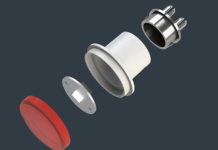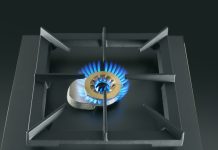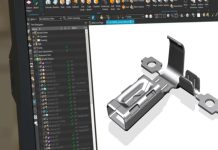Mechanical seals are devices designed to prevent the leakage of liquids from a machine or system. These products are widely used in a broad range of industrial applications, such as pumps, motors, mixers, and rotating machinery. Meccanotecnica Umbra, a company that boasts more than 50 years of activity in the sector, shows the main characteristics of these components, highlighting their crucial role.

“A mechanical seal – the company explains – consists of several parts that work together to ensure an effective seal: Sealing Ring (it is the main part of the mechanical seal and is responsible for creating a barrier against fluid leakage. The sealing ring can be made of elastomeric materials such as rubber or silicone, or of more rigid materials like metal); Compression Spring (it provides a nearly constant pressure between the sealing rings); Static Sealing Ring or static gasket (it is fixed to the equipment housing: this ring provides a stable contact point for the dynamic sealing ring); Dynamic Sealing Ring (it is the one that moves along with the rotating shaft of the equipment. This ring adapts to the moving shaft, maintaining the seal and preventing fluid leakage); Housing (it is the structure within which the mechanical seal is located. It is designed to provide a solid and stable support for the seal components and to prevent fluid leakage from the system). These are just some of the fundamental parts of a mechanical seal. Depending on the type and the specific application, there may be other additional parts or components”.
How does a mechanical seal work?
A mechanical seal works by creating a sealed barrier between two moving surfaces, such as a rotating shaft and a housing. “The dynamic sealing ring – Meccanotecnica Umbra adds – is positioned around the rotating shaft. This ring fits perfectly to the moving shaft and moves along with it. The pressure exerted by the dynamic sealing ring against the rotating shaft creates an effective seal. This pressure helps prevent the leakage of fluids along the shaft. The static sealing ring is fixed to the equipment’s housing. This ring provides a stable contact point for the dynamic sealing ring. When the shaft rotates, the dynamic sealing ring adjusts to the shaft itself, maintaining a constant pressure on the sealing surface. It is important for the mechanical seal to be designed and installed correctly to ensure an effective seal. Proper lubrication and maintenance are also crucial for the proper functioning of the seal”.
The main advantages of mechanical seals
As Meccanotecnica Umbra highlights, mechanical seals offer several advantages over other types of components:
• pressure resistance: mechanical seals are capable of handling high pressures with ease;
• temperature resistance: mechanical seals can operate under extreme temperature conditions without compromising their effectiveness in sealing;
• energy consumption: mechanical seals consume less energy compared to, for example, gland packing seals;
• minimal wear: thanks to their precise design and use of high-quality materials, mechanical seals are known for their long-lasting durability. This results in minimal wear over time, reducing the need for frequent maintenance interventions and ensuring greater reliability of the machines.



